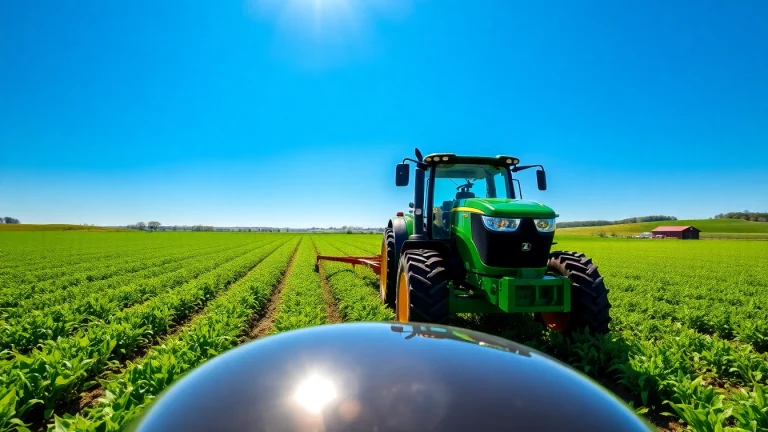
Key Insights into Choosing a Reliable Pipe Stress Company for Your Engineering Needs
Understanding Pipe Stress Analysis
What is Pipe Stress Analysis?
Pipe stress analysis is a crucial engineering process that evaluates the stresses and deformations in piping systems due to various forces, such as temperature fluctuations, pressure variations, and mechanical loads. This analysis ensures that pipes can operate safely and efficiently while maintaining their integral functions. Using sophisticated assessment tools, engineers can derive essential data that highlight how pipes will respond under different conditions, enabling them to design systems that can withstand the rigors of operational demands.
Importance of Pipe Stress Analysis in Engineering
The significance of pipe stress analysis cannot be overstated. It is foundational in numerous industries, including oil and gas, chemical processing, water treatment, and nuclear power. Performing thorough stress analysis is critical to preventing catastrophic failures, which could lead to hazardous situations, property damage, and significant financial losses. Specifically, effective pipe stress analysis aids in:
- Ensuring structural integrity and longevity of piping systems.
- Identifying potential failure points and design flaws before actual construction.
- Compliance with industry standards like ASME B31.3 for Process Piping and API 570 for piping inspection.
- Reducing maintenance costs by planning for appropriate materials and supports.
Incorporating effective stress analysis can significantly enhance a project’s overall safety, reliability, and efficiency, leading to cost savings and optimized operational performance.
Common Applications of Pipe Stress Analysis
Pipe stress analysis is employed in various scenarios spanning multiple industries. Common applications include:
- Power Plants: In power generation facilities, pipe systems transport steam and water under high pressure and temperature, making rigorous stress analysis essential.
- Oil and Gas Industry: From drilling rigs to offshore platforms, analyzing piping systems ensures safe transportation of hydrocarbons.
- Chemical Processing: Pipelines carrying corrosive and toxic materials must be designed to prevent leaks and withstand aggressive environments.
- Aerospace: In aerospace engineering, pipe stress analysis is crucial for ensuring the reliability of fuel and hydraulic systems.
Choosing the Right Pipe Stress Company
Key Qualities to Look For in a Pipe Stress Company
Finding the right pipe stress Company is crucial for ensuring the success of a project. Several core qualities set exceptional firms apart from their competitors:
- Expertise: Look for companies with seasoned professionals who possess extensive knowledge in pipe stress engineering and have handled similar projects successfully.
- Certifications: Ensure the firm has relevant certifications such as ASME, ISO, or equivalent industry standards that guarantee adherence to best practices.
- Tools and Technology: The use of advanced software tools such as CAESAR II, ROHR2, or SIMFLEX indicates their capability for performing sophisticated analyses.
- Customer Service: A commitment to customer satisfaction and effective communication can enhance collaboration and project outcomes.
Evaluating Company Reputation and Expertise
When selecting a pipe stress company, evaluating their reputation in the industry is paramount. Researching past projects, client testimonials, and case studies can provide insights into their capabilities. Consider exploring online reviews, professional forums, or industry associations to gauge overall satisfaction. Reputation indicators may include:
- Years of experience in the pipe stress analysis sector.
- Successful completion of high-profile projects.
- Partnerships with reputable organizations or industry associations.
- A strong track record of safety and compliance.
Questions to Ask Before Partnering with a Pipe Stress Company
Before committing to a partnership with a pipe stress analysis company, it’s essential to ask pertinent questions to ascertain their suitability:
- What is your approach to pipe stress analysis, and what methodologies do you employ?
- Can you provide references from past clients or case studies of similar projects?
- What software tools do you use for analysis, and how do they ensure accuracy?
- What is your timeline for project delivery, and how do you handle delays or changes?
These queries can facilitate a more profound understanding of the company’s processes and help align expectations for successful project execution.
Leading Technologies in Pipe Stress Analysis
Innovative Software Solutions for Pipe Stress Analysis
Over the past decade, the evolution of software technology has significantly advanced the capabilities of pipe stress analysis. Key tools such as CAESAR II, ROHR2, and Autodesk Plant 3D have become industry standards, offering features such as:
- Modeling and Simulation: These tools allow engineers to create precise models of piping systems to simulate various operational scenarios, identifying stress concentrations and critical paths.
- Integration with Design Software: Compatibility with engineering design software ensures seamless workflows between different phases of project development.
- Reporting and Documentation: Advanced software tools facilitate automated reporting of stress analysis results, making documentation quicker and more efficient.
- User-Friendly Interfaces: Modern programs often include intuitive interfaces that streamline training and user experience for engineers.
Trends in Pipe Stress Analysis Technology
As technologies advance, several trends are shaping the future of pipe stress analysis:
- Increased Use of Automation: Firms are leveraging automation in their analysis processes to reduce the time spent on repetitive tasks, enabling engineers to focus more on complex problem-solving.
- Incorporation of Machine Learning: The introduction of machine learning algorithms assists in predictive analytics, helping engineers better forecast potential system failures based on historical data.
- Cloud Computing: Cloud-based solutions facilitate real-time collaboration across different geographic locations, allowing teams to access data and software from virtually anywhere.
Implementing Advanced Analysis Techniques
To enhance the accuracy and reliability of pipe stress evaluations, it is vital to implement advanced analysis techniques. These include:
- Dynamic Analysis: Going beyond static stress analysis, dynamic assessments account for transient loading conditions, which are crucial for systems subjected to fluctuating pressures or flow rates.
- Finite Element Analysis (FEA): FEA allows for a comprehensive understanding of how piping systems will react under diverse conditions, offering detailed insights into stress distribution.
- Thermal Expansion Considerations: Integrating thermal expansion calculations into the analysis pleases these aspects often overlooked but critical for maintaining system integrity.
Best Practices for Effective Pipe Stress Analyses
Conducting Preliminary Assessments
Before diving into detailed analyses, conducting preliminary assessments can clarify project requirements and identify potential challenges:
- Gather System Specifications: Collect all relevant system specifications, including materials, operating conditions, and design codes, to inform your analysis thoroughly.
- Identify Key Influencing Factors: Recognize factors such as temperature, pressure, and location that may affect the performance of pipe systems.
- Establish Key Performance Metrics: Define the parameters for success and establish what constitutes acceptable levels of stress and deformation.
Collaborating with Multi-Disciplinary Teams
Effective collaboration with multi-disciplinary teams is vital for successful piping projects. Integration with mechanical, civil, and electrical engineers ensures that all systems function cohesively. Best practices include:
- Regular communication and meetings to ensure alignment on project goals and status.
- Utilizing collaborative software tools that facilitate real-time information sharing and documentation.
- Involving all relevant stakeholders in the design review process to address potential issues early in the project lifecycle.
Documenting and Reporting Findings
Thorough documentation of the analysis process and findings is essential for maintaining project integrity. Establishing comprehensive documentation practices ensures that all stakeholders have access to critical information:
- Automate reporting features in software to streamline documentation processes.
- Prepare clear, concise analysis reports that summarize key findings, methodologies used, and potential risks identified.
- Incorporate visual aids such as graphs and charts to enhance the clarity of complex data.
Future of Pipe Stress Analysis in Engineering
Emerging Trends in the Industry
The field of pipe stress analysis is poised for transformation with the emergence of new trends that could reshape engineering practices. Several of these trends include:
- Sustainability Initiatives: Increased focus on sustainable designs and materials will drive innovations in stress analysis practices.
- Integration with Internet of Things (IoT): Real-time monitoring of piping systems using IoT technology can lead to proactive maintenance practices.
- Collaboration with Artificial Intelligence: AI tools can process vast amounts of operational data to provide insights into stress management and system monitoring.
Impact of Regulations on Pipe Stress Analysis
Regulatory frameworks play a vital role in shaping standards for pipe stress analysis. Compliance with evolving regulations ensures that engineering practices remain safe and effective. Significant impacts of regulations include:
- Heightened scrutiny on environmental and safety protocols that require rigorous stress analysis documentation.
- The establishment of new industry codes that mandate advanced analysis techniques for new infrastructure projects.
- Incentives for companies implementing greener technologies in their designs and analyses.
Preparing for Future Challenges in Pipe Engineering
To remain competitive in an evolving landscape, pipe stress companies must prepare for future challenges. Strategies to overcome these challenges include:
- Investing in ongoing training and development for engineering teams to stay updated on the latest technologies and methodologies.
- Fostering relationships with technology providers to leverage cutting-edge solutions in pipeline stress analysis.
- Developing a robust risk management framework to address unpredictabilities and ensure operational resilience.


